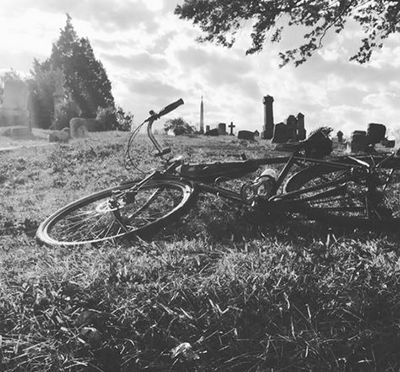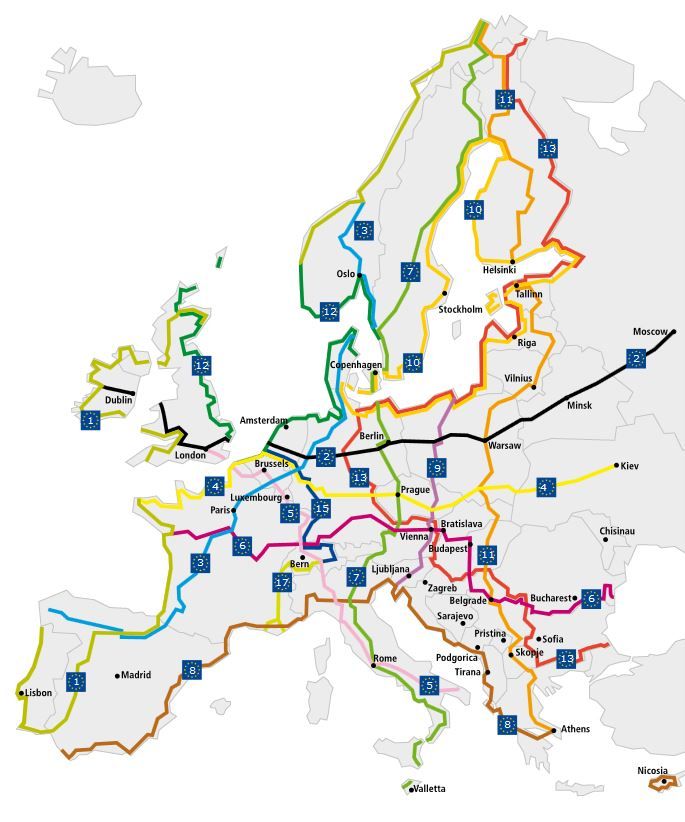Cyclotourism has finally been getting some prime time in Varaždin County. Although, the headline “Cyclist Restroom by the Cemetery” probably wasn’t envisioned as a Haloween publicity stunt but rather a misjudged decision by someone who believed that an 878.000 kuna investment might go unnoticed because it involved the word cycling. Or was it the word cemetery? Still, it is a sign of the times that bikes are en vogue.
Croatian city councils and counties have finally realized bicycle tourism is a possible source of revenue – thanks to generous EU funds available for projects that involve cycling. However, in order to actually implement these EU guidelines that encourage embracing bicycle tourism as an eco-friendly and sustainable industry, counties are facing a tough challenge as there is great disparity between current know-how, cycling policies, cycling culture on one side and the declared goals on the other. The biggest policy issue being the fact that cycling as a tourist activity is being separated from cycling as a form of transport.
The aforementioned facility, a public shower/toilet for cyclists being built next to Varaždin’s main cemetery, is a great example of this problem and of the common monty pythonesque features of cycling in Croatia. Bike lanes that magically appear and vanish in inner city areas, tourist cycling routes that consist of signage put up on random roads with no bike infrastructure whatsoever, and now for something completely different: a bike macabre camping facility with no camping spot nearby. Did I hear someone say graveyard camping?

Photo: Francis Tatem
The building has caused public outcry in Varaždin, a backlash from resident drivers complaining about the twenty parking spots lost, befuddled voices from local architects pointing out that the cemetery is a monument of architecture and a better spot should have been found for what is essentially taking shape as a public toilet. Even the local cycling community is peeved that a bike touring facility is being erected in a spot that sees next to nothing of bike touring traffic. Meanwhile cycling is still outlawed in Varaždin’s pedestrian zone and bike lanes in the city are being poorly designed. Surely, only adding fuel to the fire is the fact that the predicted 80 day construction time frame has already been generously exceeded – construction work commenced in May, the final construction cost no doubt skyrocketing as a consequence of the delay.
Varaždin County has acknowledged that there is a public interest in making cycling an important ingredient of its tourist offering, not least because the Croatian Ministry of Tourism announced this month the approval of the project entitled Varaždin County bike route. Although one must say the 350 000 kunas to fund this project resonates very hollow when compared to the greater than twofold amount being thrown at the bizarre cycling cemetery project and especially when sized up to similar projects around the world.
This points to the problem true of most Croatian cycling projects: they are set in motion by tourism officials in local governments faced with the dreaded limited funding obstacle, rather than a generous government funded national strategy aimed at the potentially serious source of revenue that cycling generates. Currently the figures show an economic impact of $83 billion in the USA and €44 billion in the EU. Nor is cycling being encouraged as a serious alternative to motorized transportation as seen in plenty of north European cities, but also in nearby Ljubljana, a city that can serve as a great example to where Croatian cities should be heading.
Photo: Francis Tatem
On the other hand there are promising signs that Varaždin is looking to take a ride on the bike side. Its mayor, Ivan Čehok, stated his intent to apply for European Bank funding in order to build a cycling network that would cover the entire city of Varaždin. This would finally give the large local cycling community an environment in which to flouris. But even if the funding should come through one has to be wary of bad role models such as Zagreb, where bike lane projects sponsored by the local government are poorly designed and lack any functionality.
One only hopes that Croatian tourist boards will soon realize that in order to start generating serious revenue from cycling they need to apply their efforts on more than just putting up signage and promoting their destinations abroad. By pressuring the government to create a policy guideline that would require of the public owned Hrvatske Ceste Road Company to include cycling lanes when rebuilding existing regional roads, or at the very least road including shoulders in both directions on every 2-way road. This kind of strategy would create a huge boost to not only bicycle tourism but also to Croatian bicycle culture, still very much in the fragile embryo stage.
The Varaždin tourist board rightly stated when being awarded the funds for the bike route project that the potential is there. Plenty of quiet, low intensity traffic side roads that zig-zag through the picturesque and history rich countryside, abandoned gravel roads, wide hiking paths as well as the proximity to the major bike touring Euro Velo corridor.

Euro Velo routes, Source: Euro Velo
All this is very true; the county definitely has the potential for developing into a great bike touring destination. But the powers that be need to realize that designing separated on-road bike lanes and bike only paths is what makes the foundations for a bike friendly destination. And not putting up signs and printing bike maps. For successful examples they need only turn to learning from bicycle tourism strategies of developed cycling destinations like Slovenia, Austria and Spain.
Last but not least, they need to invest in the education of mostly non-cycling tourist officials and local motorists by offering a 101 introductory class on the basics and benefits of cycling culture and bicycle tourism. Then they will know the difference between road cycling tourism and mountain biking tourism, be familiar with cycling travel concepts like bike packing, bike camping, bike touring, credit card touring and the accommodational and infrastructural frameworks needed for each one of these diverse cycling practices.
In the meantime cycling advocates and cyclo-tourist enthusiasts have to embrace ill-designed attempts, such as the macabre bike pit stop – as actually encouraging, if somewhat bizarre omens of a cycling awakening that is taking place in Croatia.
Photo: Francis Tatem









